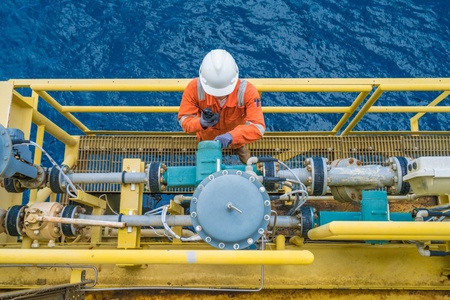A new software tool that could enable a significant reduction in the time it takes to create engineering models for oil and gas platform and pipeline repairs has been developed by scientists at the University of Aberdeen, working with digital asset management solutions provider GDi Ltd.
The technology – known as Advanced Modeller – automates the process of turning laser scans of platforms and pipelines into detailed and precise engineering models which can be used to plan repairs, maintenance, and modifications.
Current processes see engineers use these laser scans consisting of a Point Cloud (a massive collection of tiny individual points plotted in 3D space) and HD photography to generate and update 3D models which are essential in planning any changes to platforms or for the manufacture of new pipeline parts.
However this process is labour intensive, especially for precision modelling, and it can take hours to fit a single pipeline (or ‘spool’) to the point cloud.
Advanced Modeller simplifies this process by allowing operators to click along the pipeline and immediately obtain a precision fitted pipe, turning a process that currently takes hours into just a few minutes.
The technology is powered by algorithms developed by scientists at the University’s School of Engineering working alongside GDi Ltd as part of a Knowledge Transfer Partnership (KTP), leading to the launch of the software.
Dr Marcus Campbell-Bannerman and Dr Andrew Starkey have both worked on the KTP, which has been running since 2020 and finishes later this year.
Dr Bannerman said: “The oil and gas industry face significant challenges with ageing infrastructure, volatile oil prices, pressure from the regulator, and the shift towards towards renewable energies.
“It is critical that technological step-changes are introduced to enable operators to reduce their maintenance and operation budgets and continue to operate in a cost-effective way. The cost of decommissioning is also largely borne by the taxpayer so we need to find ways to better plan modifications on ageing assets to ensure this burden can be reduced.
“These point-cloud data sets provide a huge opportunity to apply artificial intelligence techniques to automate inspection, modification planning, and maintenance. The development of Advanced Modeller demonstrates this potential in a way that could provide huge savings for an industry adapting to a fast-changing energy landscape.”
Gianni Brook, GDi Managing Director, commented: “Advanced Modeller was released for external trials at the start of the year as a plugin for AutoCAD and AutoCAD Plant 3D and we have had some very promising results and feedback which we have used to improve the software further.
“While we have started with automating the process for pipeline repair and modification, the software has the potential to redefine the whole design process and we will use it in all our future modelling automation plans.”


